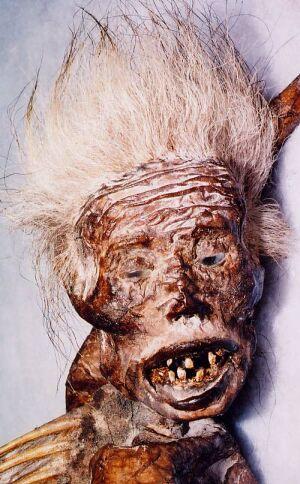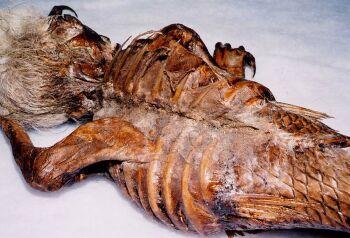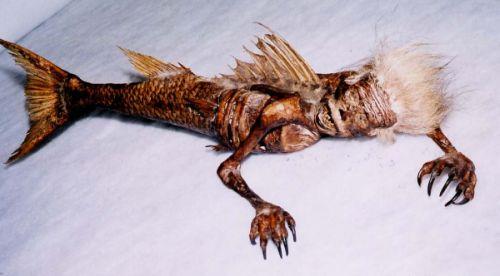Claim: Photographs show a mermaid-like creature discovered in the wake of the 2004 Indian Ocean tsunami.
Example: [Collected on the Internet, 2005]
MERMAID FOUND AT MARINA BEACH AFTER TSUNAMI Below are the pictures of a mermaid found at marina beach (CHENNAI) last Saturday. The body is preserved in the Egmore museum under tight Security. (Note: Mermaid is called as KADAL KANNI in Tamil which is an imaginary creature described in stories, with the upper body of a woman and the tail of a fish). 
|
Origins: Proving once again the maxim that there's nothing new under the sun (or "everything old is new again") comes the set of photographs displayed above, purportedly depicting a bizarre ocean-dwelling "mermaid" creature unearthed by powerful tidal forces, the latest entry in a series of older photographs being passed off as images associated with the December 2004 Indian Ocean tsunami.
We last saw these very same photographs back in 2003, when they were circulated on the Internet as a "Mermaid found in the Philippines" who had been "caught by fishermen in Visayas Region." Not only were they hoaxes
Creatures identified as "merfolk" (half-human, half-fish creatures who live in the sea, both male "mermen" and female "mermaids") have been a staple of folklore and mythology for many centuries. Although the popular modern image of merfolk is almost exclusively limited to depictions of human-sized, attractive females with human upper torsos and fish-like tails (as exemplified by Ariel, the heroine of Disney's popular 1989 animated film adaptation of "The Little Mermaid," an 1836 children's story by
Hans Christian Andersen), that image has not always been the standard.
Depictions of mermaids as gruesome, dimunitive creatures, and the use of parts of other animals (primarily monkeys and fish) to create exemplars of such creatures, are both very, very old, as demonstrated by a supposed mummified mermaid which was exhibited in Japan several centuries ago and is thought to be up to
More recently (but still a considerable time ago) phony mermaid-like creatures crafted from various body parts and bones of fish and other animals, usually joined to dessicated monkey heads or skulls, were a common feature of

The mysterious Dr. Griffin was in fact a fictitious character played by Levi Lyman, an associate of the famous American showman and huckster
Although times have changed considerably since the days of Barnum, human nature has not. We continue to be fascinated by the same tales and the same forgeries, crafted in the same time-honored fashion.
Last updated: 11 February 2005


